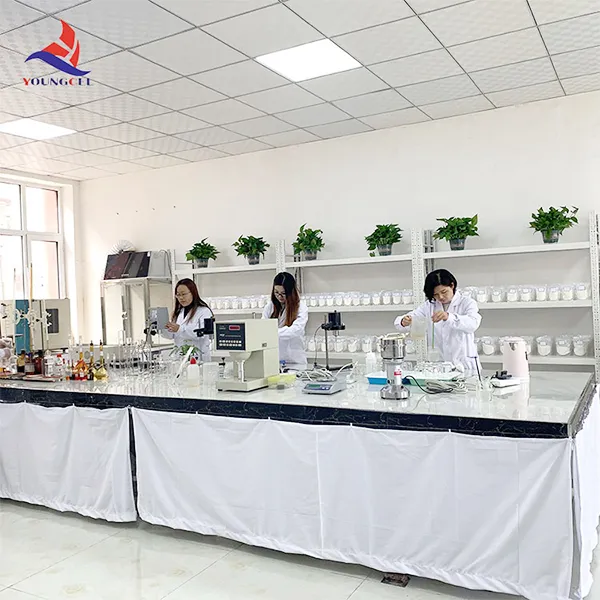Hydroxypropyl Methylcellulose (HPMC) Properties and Applications
Hydroxypropyl methylcellulose (HPMC) is a cellulose derivative widely used in various industries due to its unique properties and versatility
. As a non-ionic, water-soluble polymer, HPMC serves multiple functions across multiple applications, including pharmaceuticals, food, cosmetics, and construction.One of the most remarkable characteristics of HPMC is its ability to form viscous solutions in water, which can be adjusted based on the degree of hydroxypropyl and methyl substitution. This makes HPMC an excellent thickening agent, binder, and film-forming agent. In the pharmaceutical industry, HPMC is often used as a matrix-forming agent in controlled-release drug formulations, where it helps regulate the release rate of active ingredients. This controlled release can enhance therapeutic efficacy and improve patient compliance by minimizing the frequency of dosing.
In the food sector, HPMC is recognized as a food additive, classified under E464. It is commonly used as a fat replacer in reduced-calorie products, improving texture and mouthfeel without adding calories. HPMC also acts as a stabilizer and emulsifier, aiding in the uniform distribution of ingredients in various food formulations, including sauces, dressings, and baked goods. Its ability to retain moisture helps maintain product freshness and extend shelf life.
hydroxypropyl methylcellulose hpmc

The cosmetic industry leverages HPMC for its thickening and emulsifying properties. It enhances the texture of lotions, creams, and gels, delivering a luxurious feel on the skin. Additionally, HPMC is used to stabilize emulsions and prevent the separation of oil and water phases in cosmetic formulations.
In construction, HPMC is widely employed as an additive in cement and gypsum-based products, such as plasters, tile adhesives, and joint compounds. Its water-retention properties minimize drying shrinkage and cracking, ensuring improved adhesion and workability of construction materials. HPMC also contributes to the elongation and flexibility of building materials, making them more durable and effective.
Moreover, HPMC is esteemed for its environmentally friendly profile. Being derived from natural cellulose, it is biodegradable and poses minimal ecological impact, making it a preferred choice for sustainable products.
In summary, hydroxypropyl methylcellulose is a versatile polymer with a myriad of applications across various industries. Its unique properties, such as water solubility, thickness, and emulsifying capabilities, have made it indispensable in pharmaceuticals, food, cosmetics, and construction. As research continues and new applications are discovered, HPMC is poised to play an increasingly vital role in the development of innovative products that cater to the demands of modern consumers.
-
Rdp Powder: Key Considerations for Wholesalers in the Building Materials IndustryNewsJul.08,2025
-
Key Considerations for Wholesalers: Navigating the World of Hpmc - Based ProductsNewsJul.08,2025
-
Hpmc Detergent: Key Considerations for WholesalersNewsJul.08,2025
-
Key Considerations for Wholesalers: China Hpmc For Tile Adhesive, Coating Additives, Concrete Additives, and MoreNewsJul.08,2025
-
Crucial Considerations for Wholesalers: Navigating the World of Construction MaterialsNewsJul.08,2025
-
Key Considerations for Wholesalers Sourcing Additive For Cement, Additive For Concrete, Additive For Putty from Additive Manufacturer Shijiazhuang Gaocheng District Yongfeng Cellulose Co., Ltd.NewsJul.08,2025




